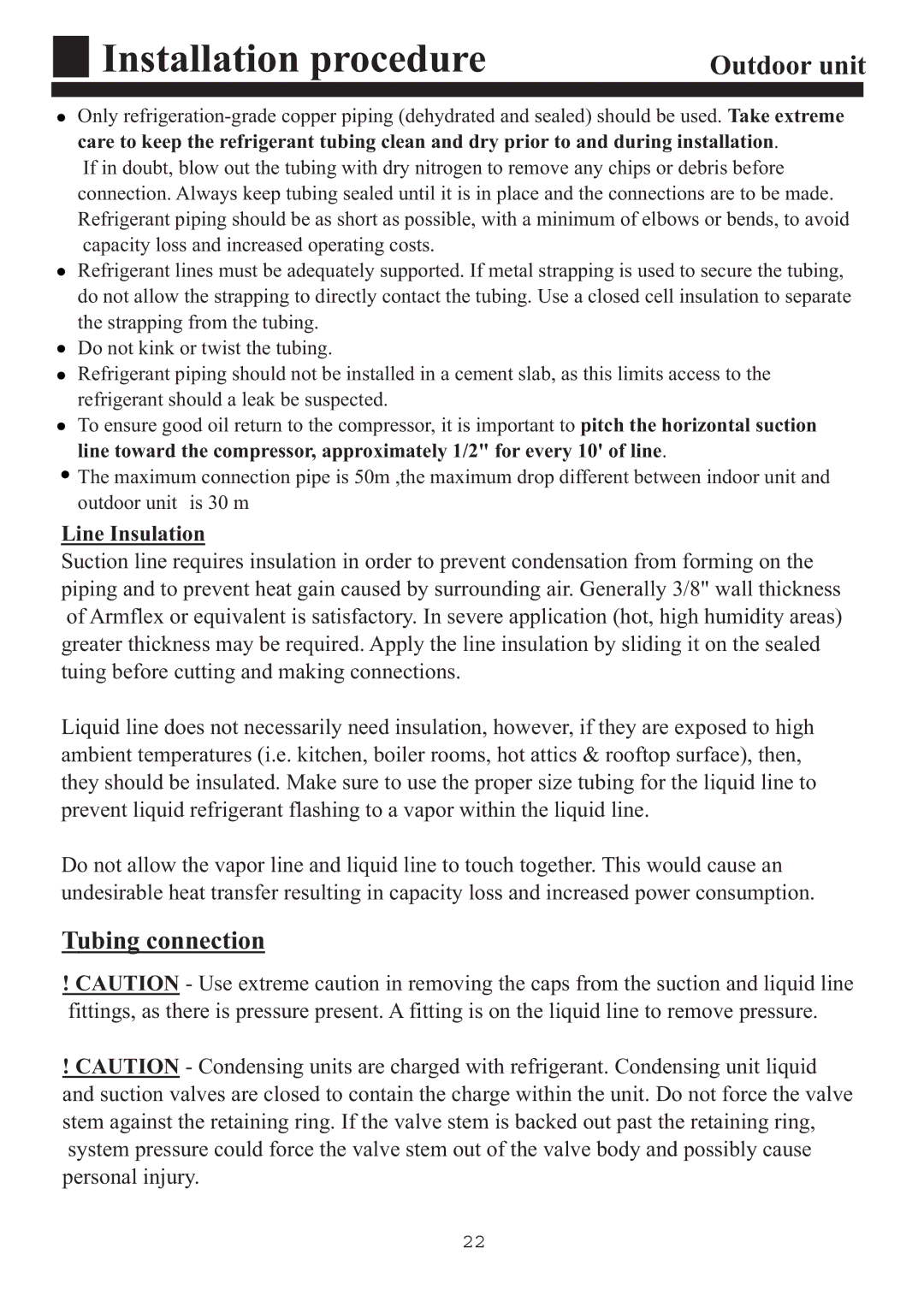

 Installation procedure
Installation procedure
Outdoor unit
![]() Only
Only
If in doubt, blow out the tubing with dry nitrogen to remove any chips or debris before connection. Always keep tubing sealed until it is in place and the connections are to be made. Refrigerant piping should be as short as possible, with a minimum of elbows or bends, to avoid capacity loss and increased operating costs.
Refrigerant lines must be adequately supported. If metal strapping is used to secure the tubing, do not allow the strapping to directly contact the tubing. Use a closed cell insulation to separate the strapping from the tubing.
Do not kink or twist the tubing.
Refrigerant piping should not be installed in a cement slab, as this limits access to the refrigerant should a leak be suspected.
![]() To ensure good oil return to the compressor, it is important to pitch the horizontal suction line toward the compressor, approximately 1/2" for every 10' of line.
To ensure good oil return to the compressor, it is important to pitch the horizontal suction line toward the compressor, approximately 1/2" for every 10' of line.
![]() The maximum connection pipe is 50m ,the maximum drop different between indoor unit and outdoor unit is 30 m
The maximum connection pipe is 50m ,the maximum drop different between indoor unit and outdoor unit is 30 m
Line Insulation
Suction line requires insulation in order to prevent condensation from forming on the piping and to prevent heat gain caused by surrounding air. Generally 3/8" wall thickness of Armflex or equivalent is satisfactory. In severe application (hot, high humidity areas) greater thickness may be required. Apply the line insulation by sliding it on the sealed tuing before cutting and making connections.
Liquid line does not necessarily need insulation, however, if they are exposed to high ambient temperatures (i.e. kitchen, boiler rooms, hot attics & rooftop surface), then, they should be insulated. Make sure to use the proper size tubing for the liquid line to prevent liquid refrigerant flashing to a vapor within the liquid line.
Do not allow the vapor line and liquid line to touch together. This would cause an undesirable heat transfer resulting in capacity loss and increased power consumption.
Tubing connection
!CAUTION - Use extreme caution in removing the caps from the suction and liquid line fittings, as there is pressure present. A fitting is on the liquid line to remove pressure.
!CAUTION - Condensing units are charged with refrigerant. Condensing unit liquid and suction valves are closed to contain the charge within the unit. Do not force the valve stem against the retaining ring. If the valve stem is backed out past the retaining ring, system pressure could force the valve stem out of the valve body and possibly cause personal injury.
22
